Methods Used: FUE, FUT
Cost: £3,000 – £7,000
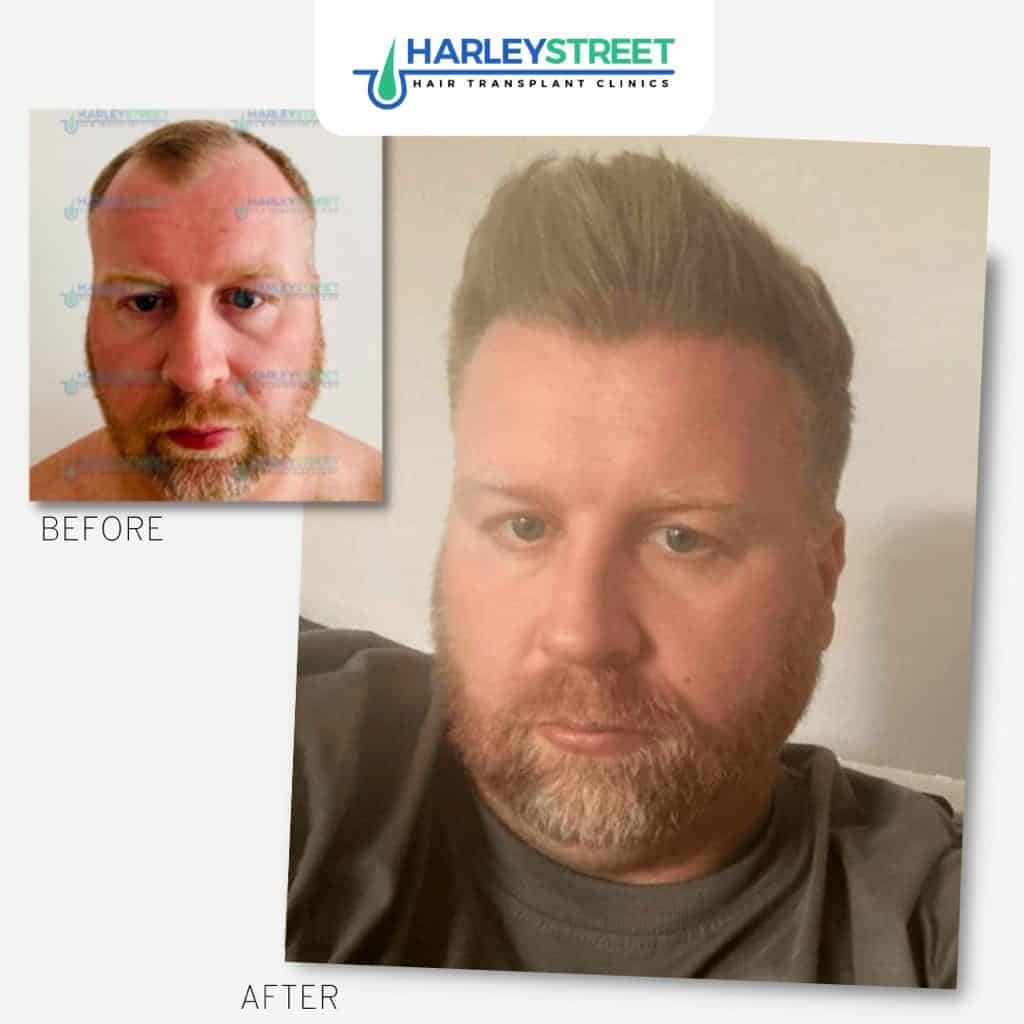


Did you know that up to 50% of women will suffer with hair loss at some point in their lives? As such many women may look for hair restoration treatments, but are unaware they are also eligible for a hair transplant surgery. On this page, you’ll find everything you need to know about female hair transplants, from procedure, and cost, to aftercare as well!
A female hair transplant procedure is a surgical option to help fight the effects of hair loss and thinning hair. The FUE hair transplant procedure looks to take individual hair follicles from the back and sides of a woman’s head and implant them into the affected area (recipient site).
Most female hair transplants we offer look to tackle the female pattern hair loss that occurs in the mid-parting line. For more information on this, please see our article on the Ludwig Scale.
Although predominantly used to treat female pattern hair loss, hair transplants can also be offered to women who would like a hairline hair transplant, an eyebrow transplant, or a hair transplant for scar repair.
Unlike other hair loss treatments, hair transplants are the only method that is able to restore hair growth in areas where hair has previously been unable to grow. Whilst a female hair transplant is not a cure, it is a fantastic long-term solution for those suffering with pattern baldness.

Before your surgery, your surgeon will give you a small amount local anaesthetic. This will help numb any pain during the procedure.
At the beginning of the procedure, the lead surgeon extract follicular units from the donor area in natural groups of 1-4 (this is called a hair graft). These grafts, or follicular units, are circled by a tiny 1mm punch enabling an accurate and precise incision to be made.
The follicular unit is then grasped gently and pulled away from the loose connective tissue that surrounds the unit under the skin. This process is then repeated numerous times until the correct number of donor grafts have been extracted.
Once the hair grafts have been extracted and checked, the donor hairs are then implanted into the recipient area (usually the mid-parting in women) one by one. This process is then repeated over and over again as desired.
As patients are left with tiny 0.8mm – 1mm scars from follicle extraction, as opposed to other hair surgery treatments which make larger incisions, the FUE recovery time is usually between 7-10 days.
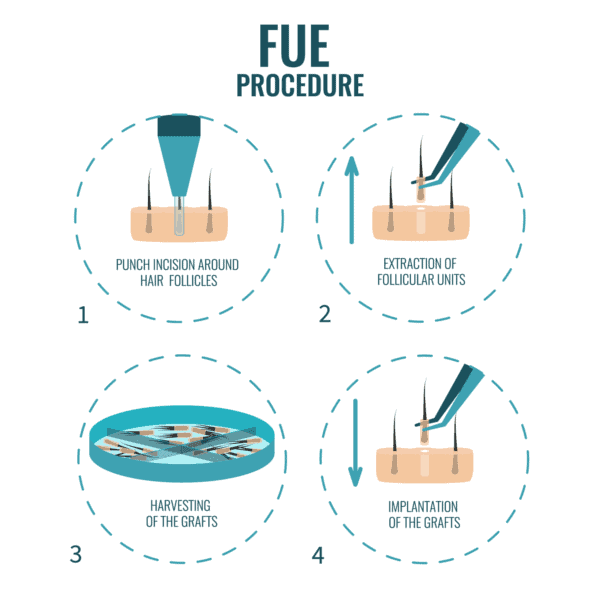
At Harley Street Hair Transplant Clinics, we are experts in performing the FUE hair transplant procedures. This surgical method is perfect for treating female hair loss as it is suitable for a range of different hair restoration scenarios.
The main aim of this hair transplant treatment is to treat hair thinning symptoms on the mid-parting line of the scalp. As women with female pattern baldness tend to suffer with thinning across the mid-parting, this hair transplant procedure looks to implant new donor hairs into this area, ensuring the area will look full and thick 12 months after the procedure.
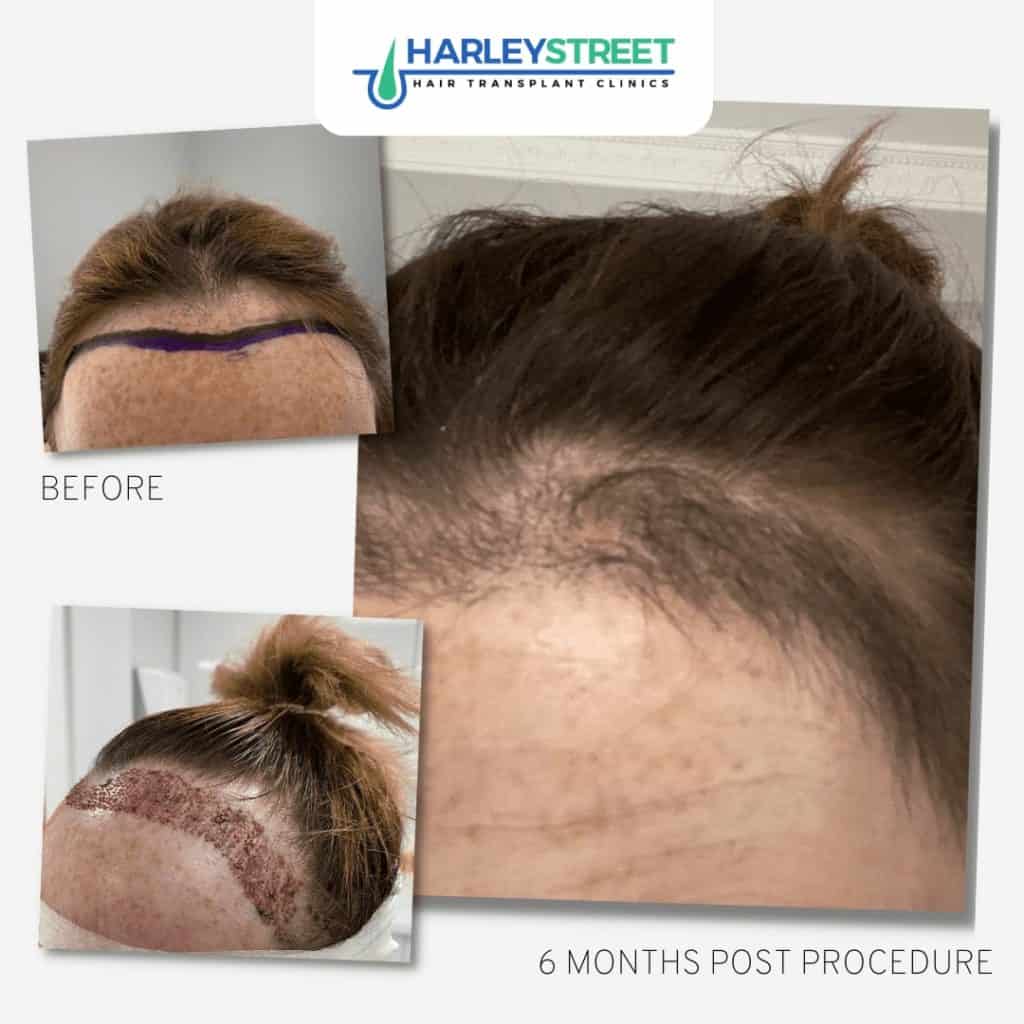
More popular hair transplants with women are the hairline restorations. In rare cases, women may begin to see their hairline recede or be born with a naturally high hairline. As this can sometimes affect a person’s mental health, an FUE hair transplant procedure can be performed to lower the hairline and promote new hair growth.
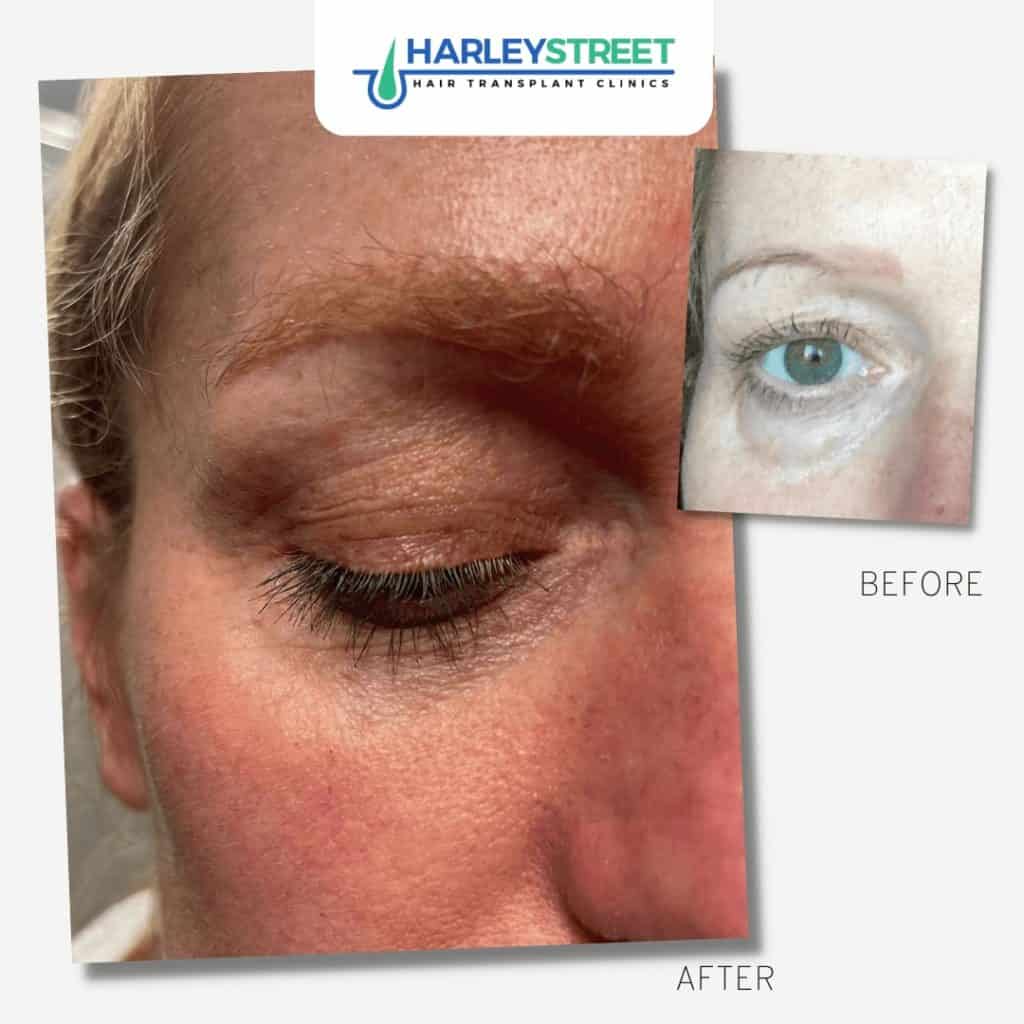
Another popular method of hair transplantation is the eyebrow transplant. This is where donor hairs are taken from the back and sides of the head and implanted into the eyebrow areas to appear thicker and fuller.
The cost of female hair transplants are dependent upon the size of the area of hair loss and roughly how many grafts are required for surgery. Harley Street Hair Transplant Clinics works on a “cost-per-area” basis, meaning your price quote will factor the area of hair loss as well as an estimated number of grafts.
Most hair transplants we provide cost between £3,000 and £7,000. This is the cost of a one-stage, one day procedure (anything up to 3,000 grafts). For more information, visit our hair transplant cost page!
After your transplant, results typically last between 10-15 years, depending on the aftercare precautions taken. During your free video consultation, one of our consultants will be more than happy to talk through your aftercare programme.
Although post-treatment medications like finasteride and dutasteride are not recommended for women, there are other treatments we can recommend. A PRP hair treatment or Minoxidil for hair loss is ideal for women after a FUE hair transplant.
Most women will experience hair loss at some point in their lives. Balding and thinning can often cause women to feel self-conscious about their image. One of the main reasons why women opt for hair transplantation is to feel comfortable with their image and restore confidence in their appearance.
Across the UK, it is estimated that 8 million women are currently suffering with hair loss symptoms. What is perhaps even more alarming is that 40% of women have stated hair loss as a major component in marital problems, and 63% believe it affects their career as well (British Medical Journal, 2005).
The cause of women’s hair loss varies much more than men. Whilst more than 95% of men suffering with hair loss have a condition called male pattern baldness (androgenic alopecia), female hair loss is much more complex.
Around 40% of all female hair loss cases can be explained by hereditary pattern baldness (androgenic alopecia). This leaves 60% of women suffering with hair loss symptoms from extraneous causes. These may include, but are not limited to stress related hair loss, chemotherapy treatments, menopausal symptoms, and harsh styling methods (curling & heat products).
In most cases, a hair transplant can only be offered out to patients who are suffering with a case of permanent hair loss, such as androgenic alopecia. This is where the hair follicles on the head shed and do not grow back.
If you suffer with female pattern baldness or would like a hair transplant in an area where there are no hair follicles (e.g. hairline lowering surgery), then you are likely to be eligible for a FUE hair transplant.
Alternatively, if you suffer with a temporary form of hair loss, such as alopecia areata, then you will likely not be eligible for surgery. This is because your hair is likely to grow back naturally, negating the need for a transplant. In these cases, we may recommend a non surgical alternative such as a PRP hair treatment.
Female pattern hair loss manifests itself in a much different way to male pattern hair loss. Whilst men typical begin suffering with a receding hairline and hair thinning on the crown, women tend to lose hair from the mid-parting.
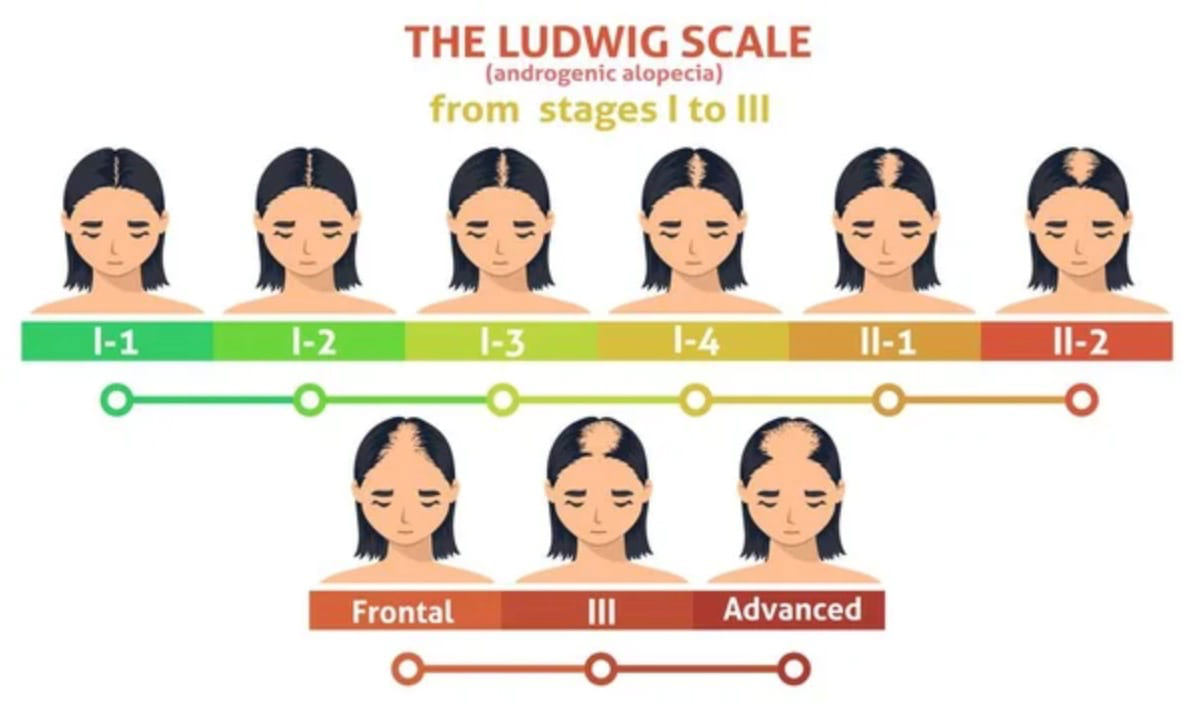
As part of a gradual process, thinning hair on the mid-parting will become more noticeable over the years, eventually requiring a hair transplant procedure to cover these sign up. It is not uncommon for some female patients to see their hairline recede backwards with age as well.
Whilst the aim of a male hair transplant to treat pattern baldness is to restore the hairline and fill in receding patches, then aim of most female hair transplants is to bolster and thicken the hair on the top of the head.
Following your hair transplantation procedure, you will have access to our hair transplant aftercare program and expert guidance, whenever you need it.
It is important to keep the scalp hydrated during the first few days following the procedure in order to protect against infection and minimise scabbing. We provide full instructions for aftercare and are on hand to answer any concerns following your procedure.
It can take 2 to 3 months for the new follicles to take and naturally grow new hair, so regrowth may be uneven at first, but rest assure, you will soon benefit from thicker looking hair. Although every patient’s recovery time and results may differ, most patients see full natural hair growth around 10 months following their procedure.
Yes, hair transplant can be successful in females. Hair transplant procedures have evolved significantly over the years, and they are no longer limited to male patients. Female pattern hair loss is a common condition that can lead to thinning hair and baldness in women. In such cases, hair transplant can be an effective solution to restore hair density and improve the appearance of the scalp.
An female hair transplant can cost between £3,000 and £7,000+. This is dependent upon the severity of the baldness as the procedure’s cost is directly related to the number of follicles extracted and implanted.
Whilst there may be a small bit of shedding soon after your procedure, you should not suffer hair loss (in the same area) after your new hair transplant, however it can take around 6 months for the new hair to start to grow and thicken.
During a female hair transplant procedure, local anaesthetic is injected in order to number the area(s). You might feel a slight prick and some discomfort during the initial administration of the local anaesthetic. However, once it takes effect, you should not experience any pain throughout the rest of the hair transplant procedure.
In the days following the hair transplant procedure, it is normal to experience some soreness in the treated areas. However, this discomfort is typically temporary. We also provide you with an aftercare pack that contains antibiotics and pain killers to help alleviate any discomfort and ensure you feel more comfortable during the recovery period. Rest assured that the discomfort is manageable, and you will be well taken care of to ensure a smooth and successful recovery.
The duration of the treatment is determined by the size of the area of hair loss to be treated.
Typically, most female hair transplant procedures last between 6 to 9 hours. However, in larger cases, the procedure might be spread over 2 days to ensure optimal results. Conversely, in smaller cases, the treatment duration will be shorter.
During your consultation, you can discuss this with one of our doctors as they will be able to give you a more accurate time frame.
After your free initial consultation, your FUE hair transplant will be performed by one of our certified hair transplant doctors. All of our procedures are performed by doctors, with a little help from our specialist team of technicians, ensuring you receive high quality care and treatment.

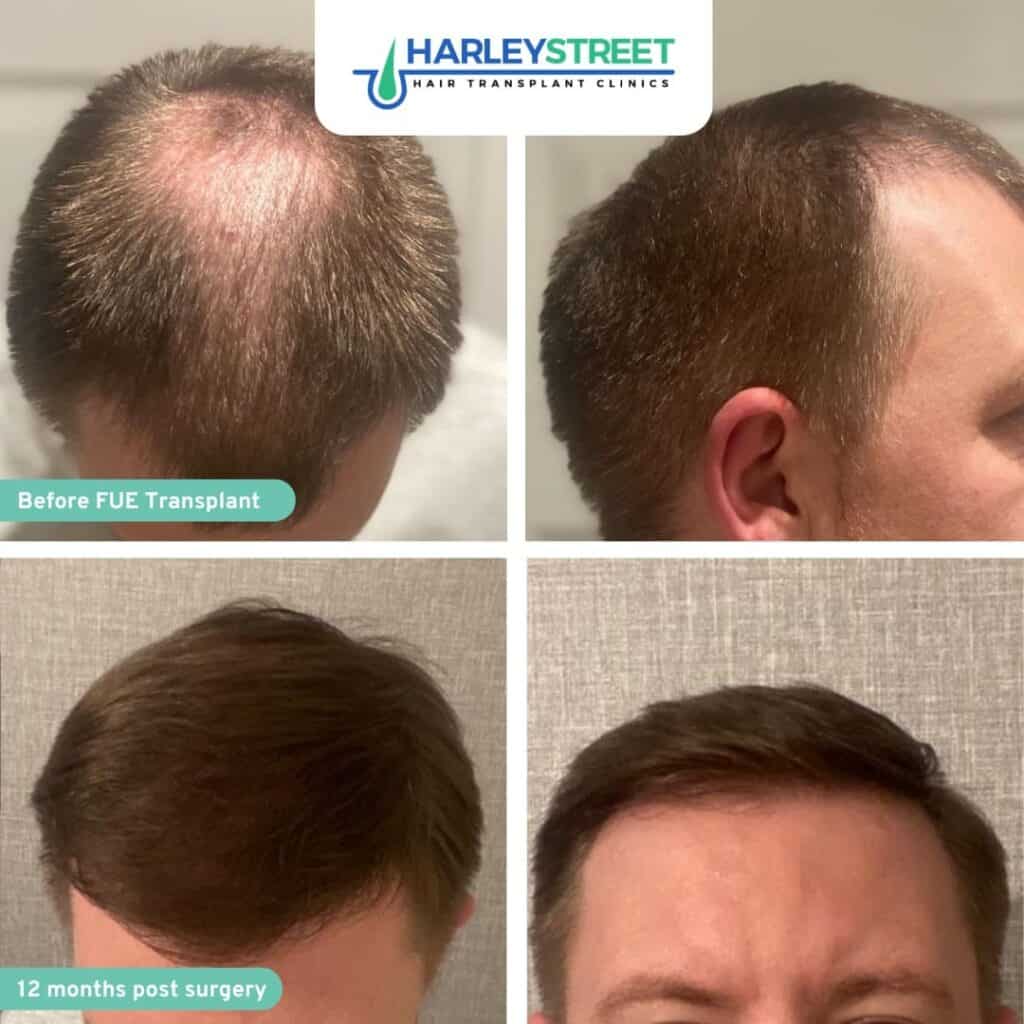



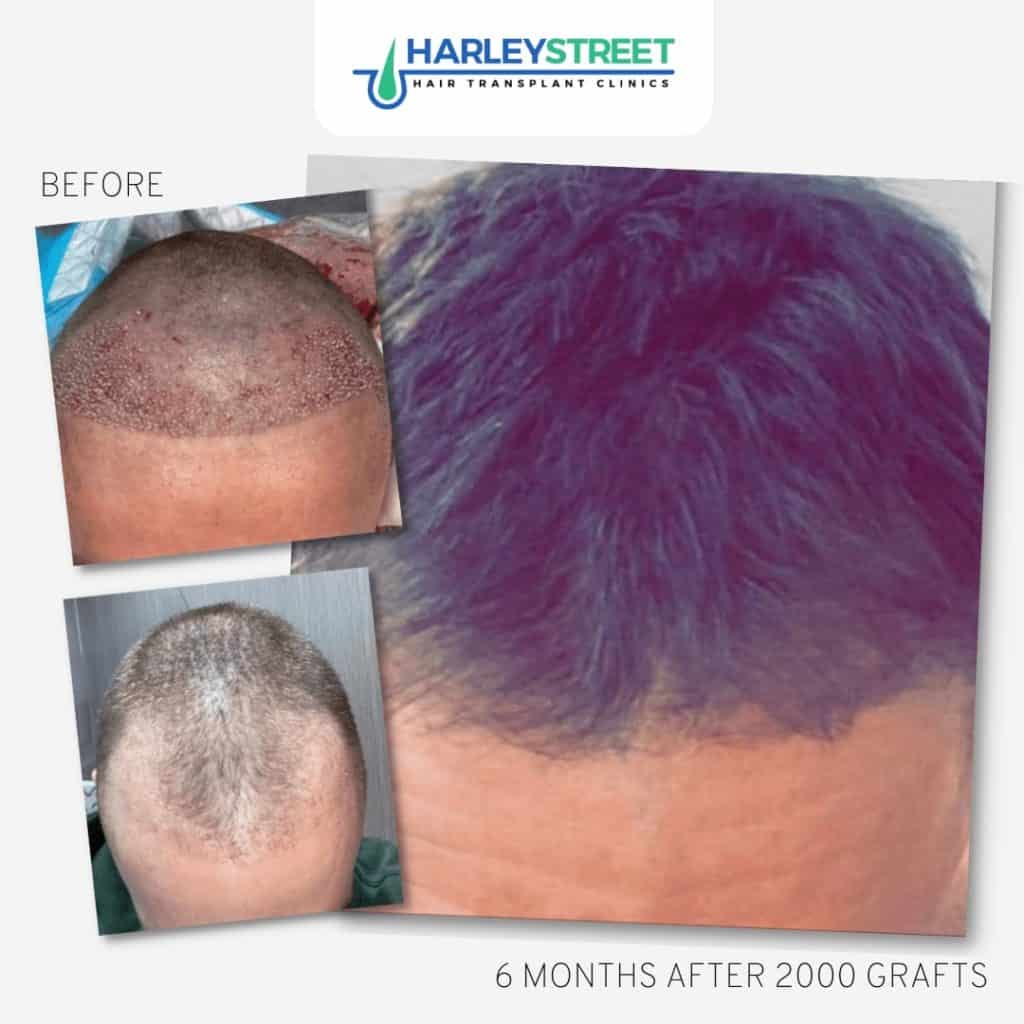


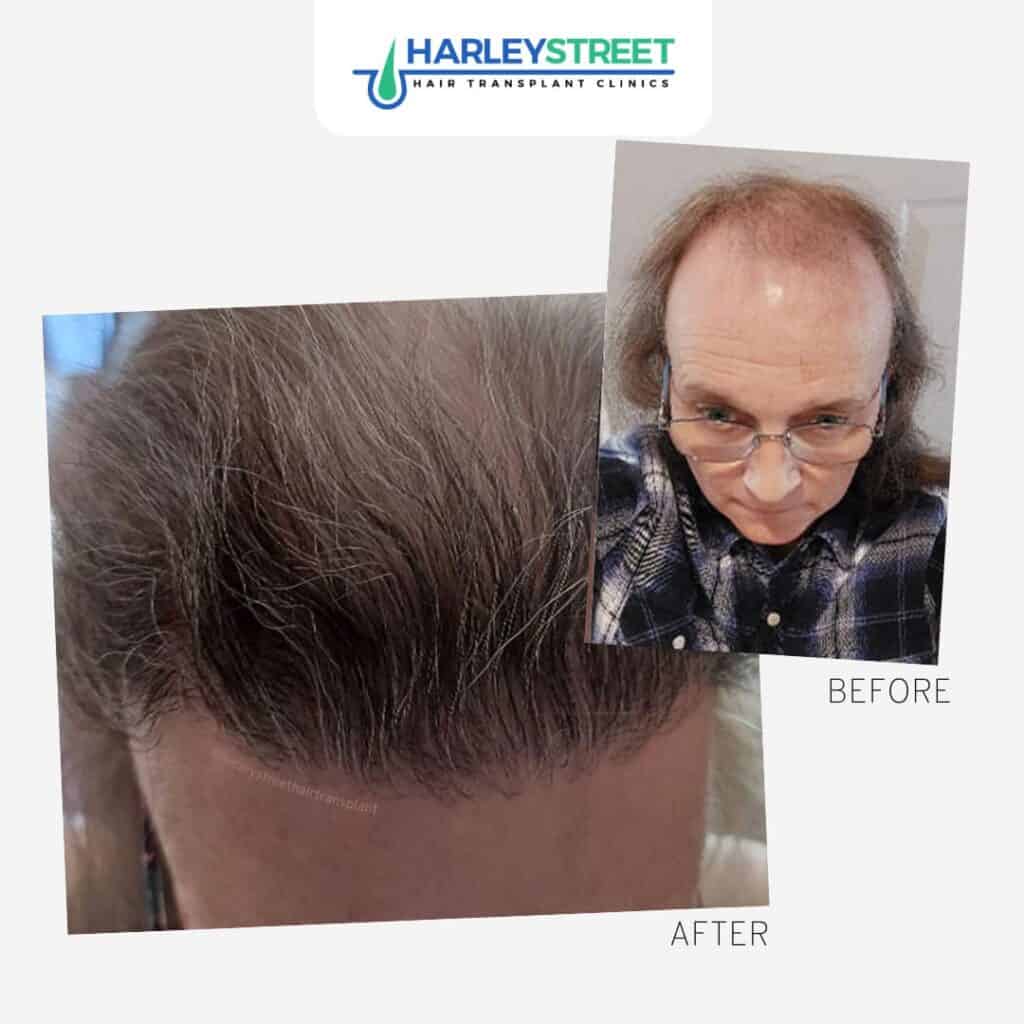
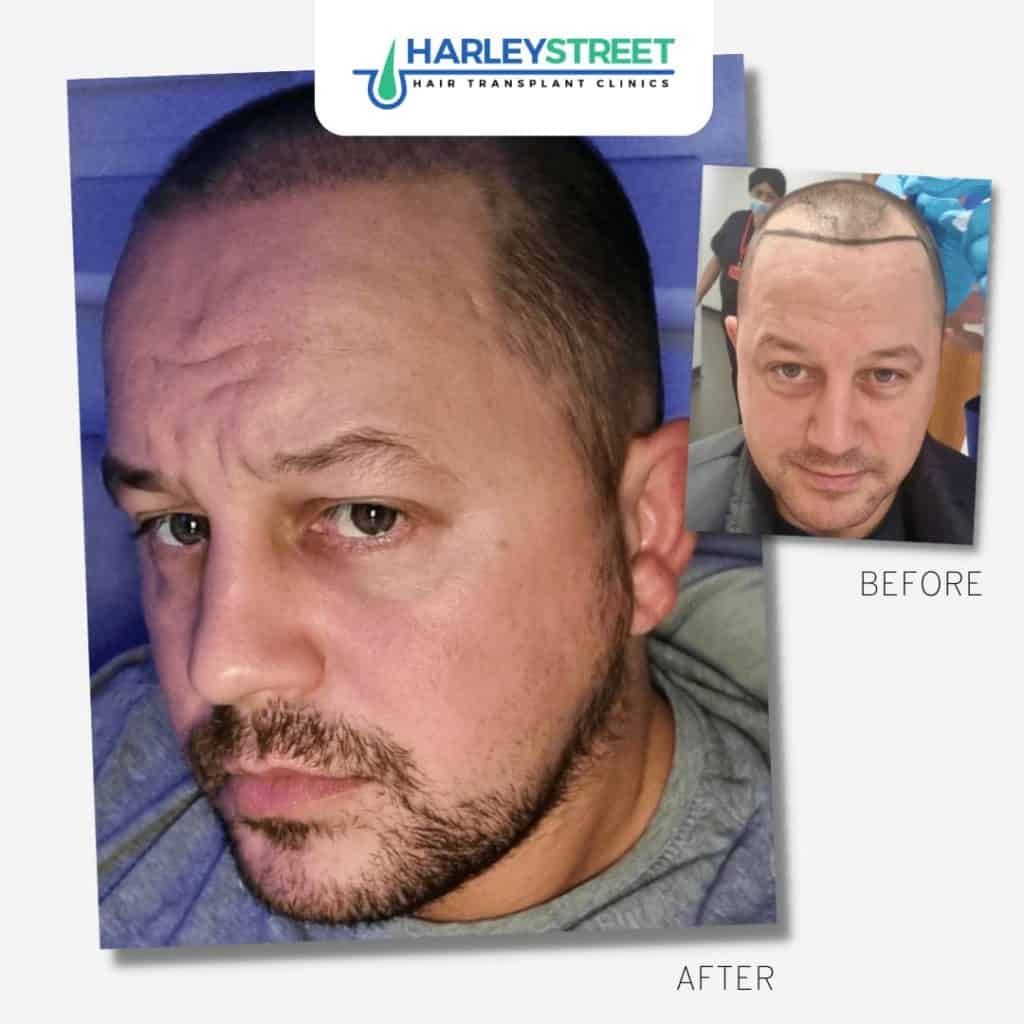

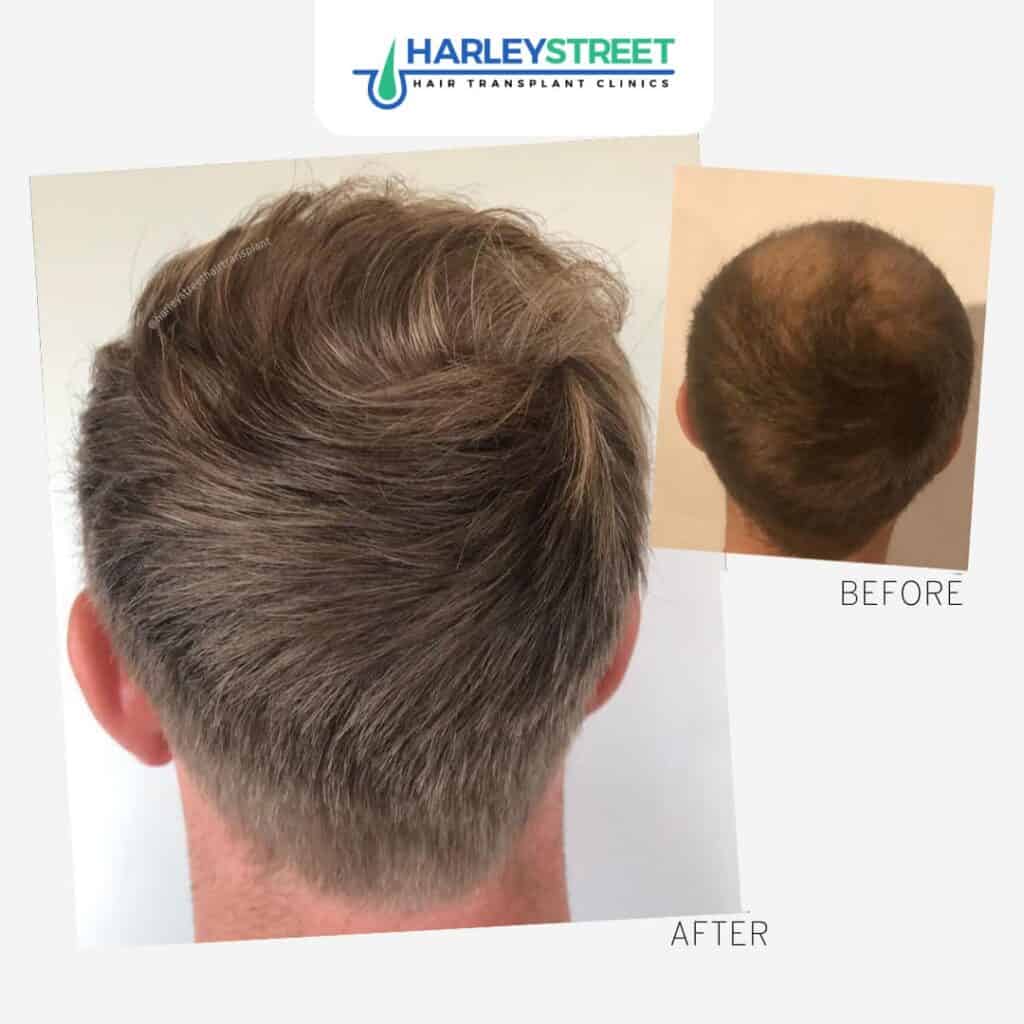
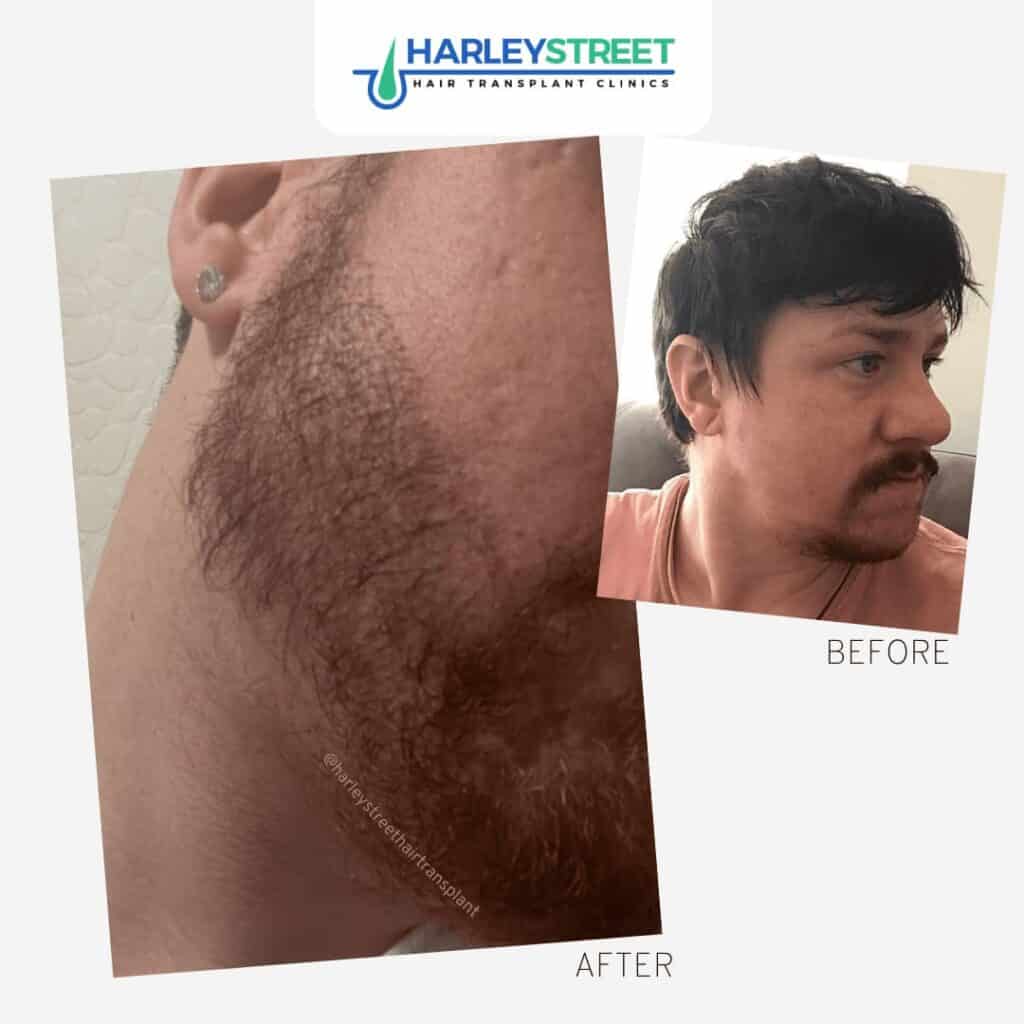
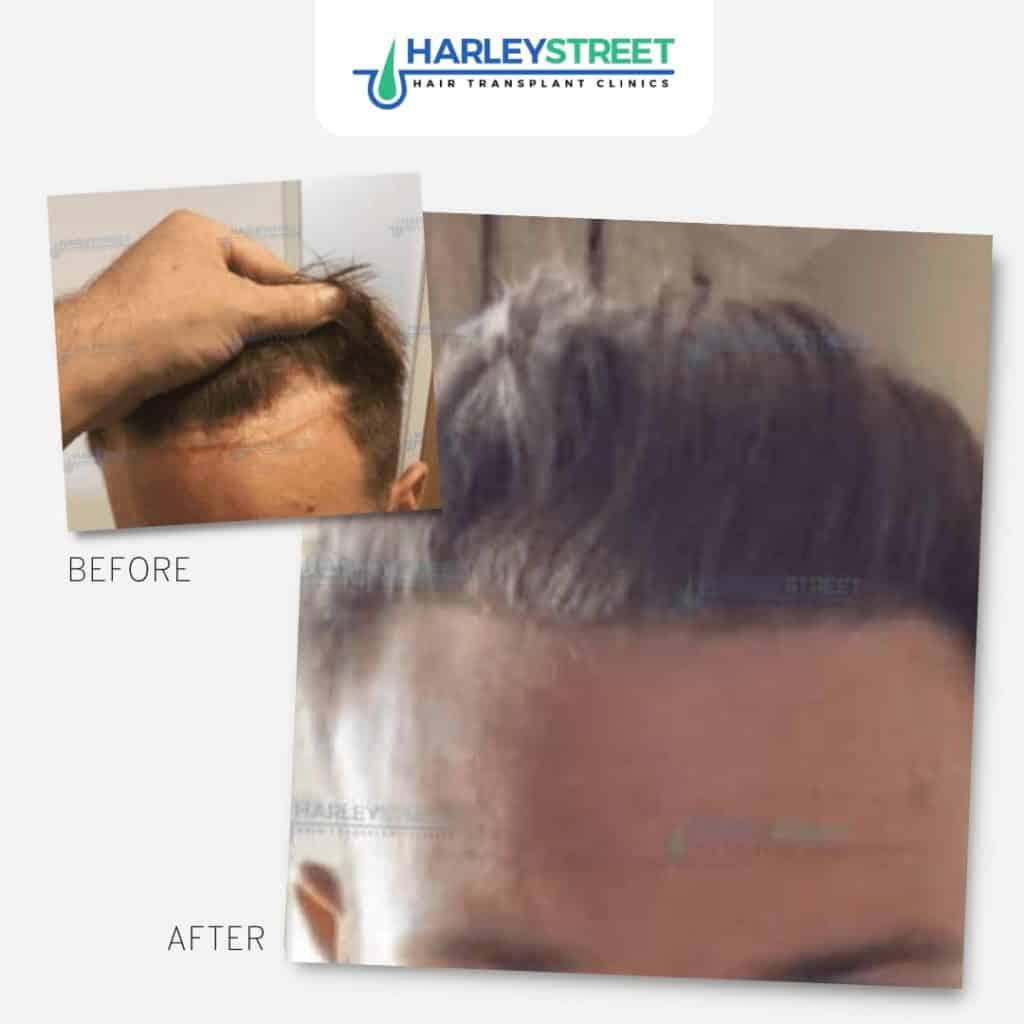
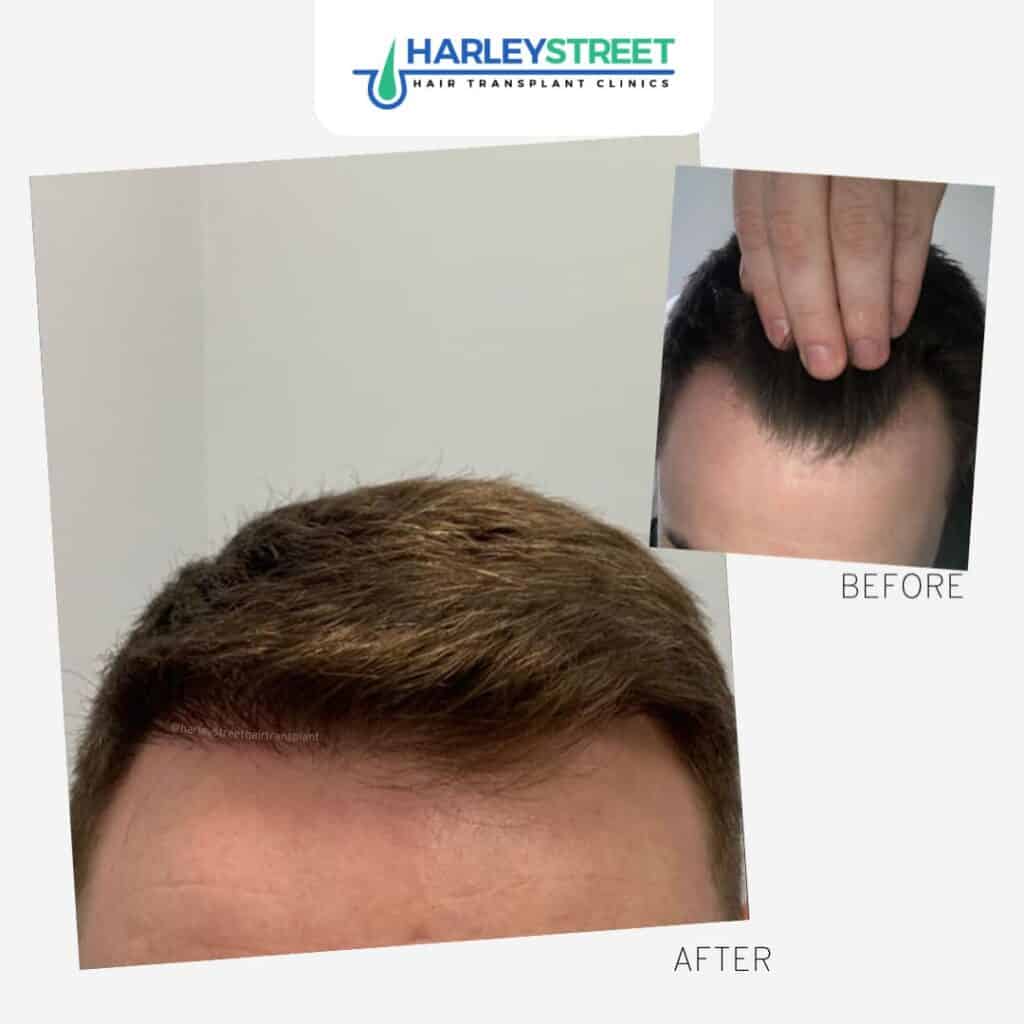
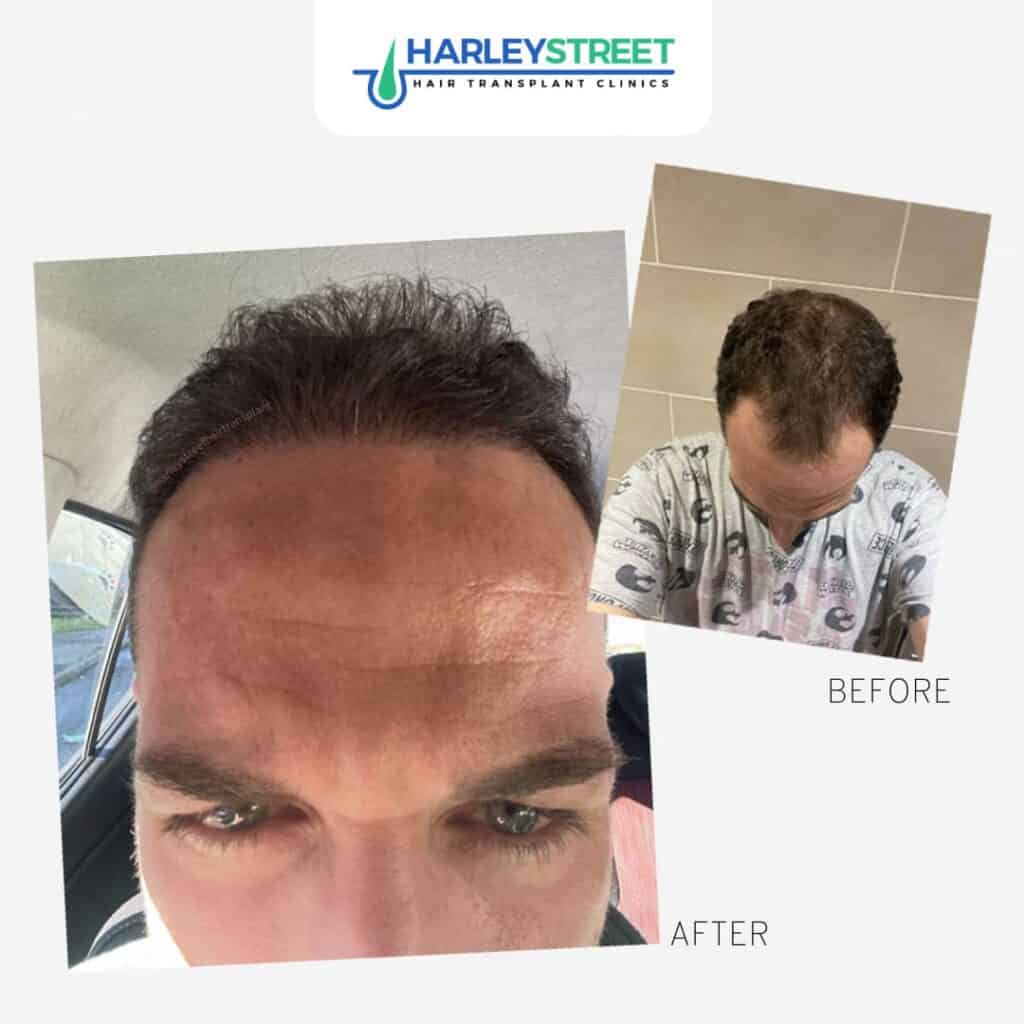
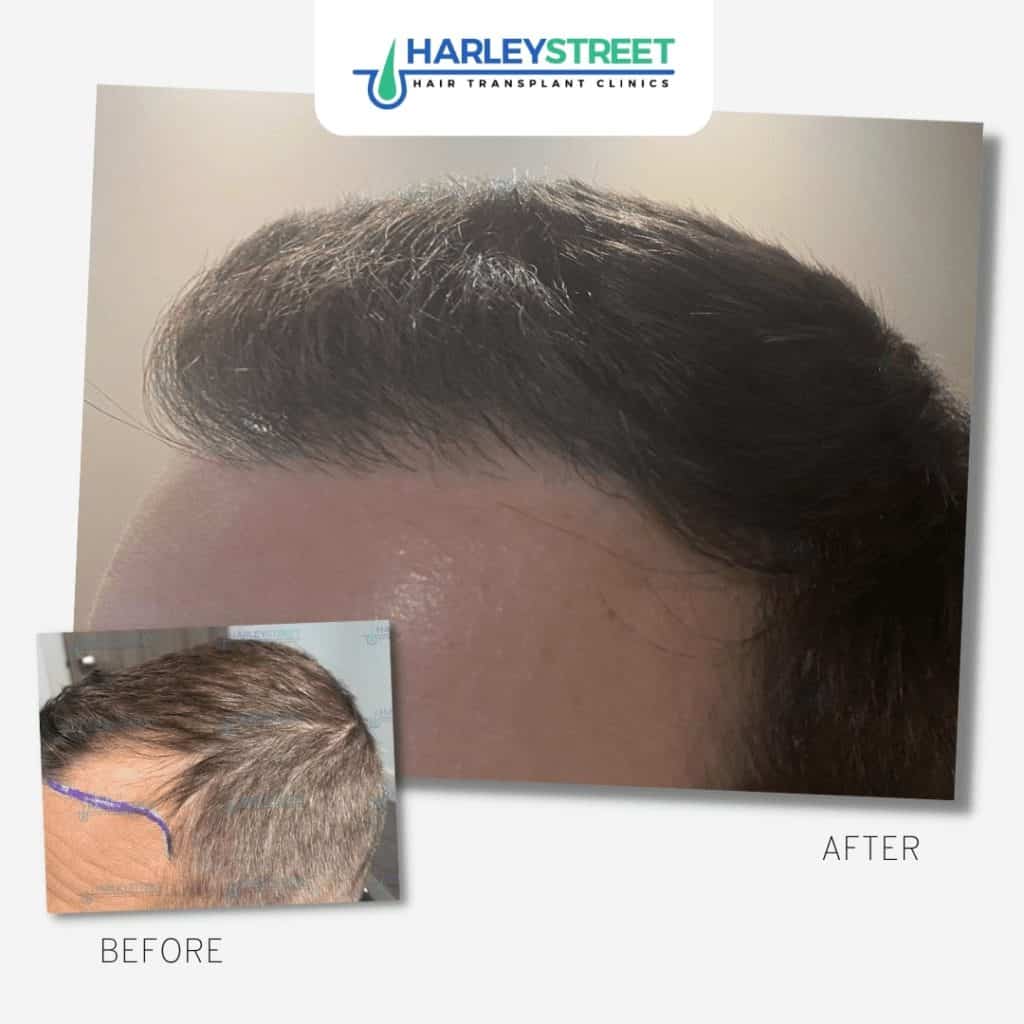
Aside from achieving fantastic results, we believe that keeping in touch with our patients before, during and after their hair transplantation procedure is paramount – it helps to keep our patients feeling calm and in control. We’re always on hand to provide guidance, support and aftercare advice. Time and again, our patients tell us that this is what sets us apart from other clinics.
You can read our great reviews of FUE hair transplants over on Google and TrustPilot